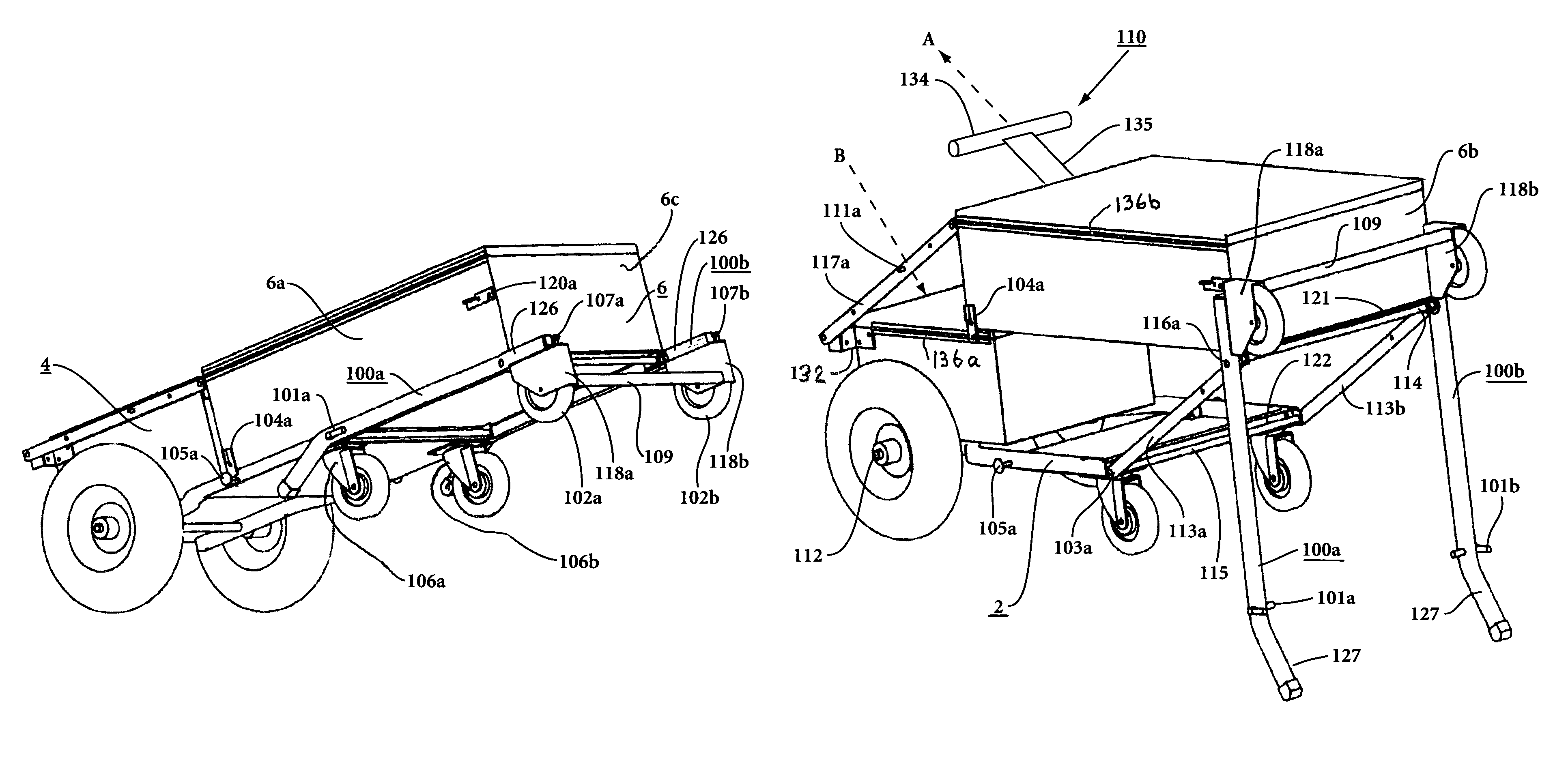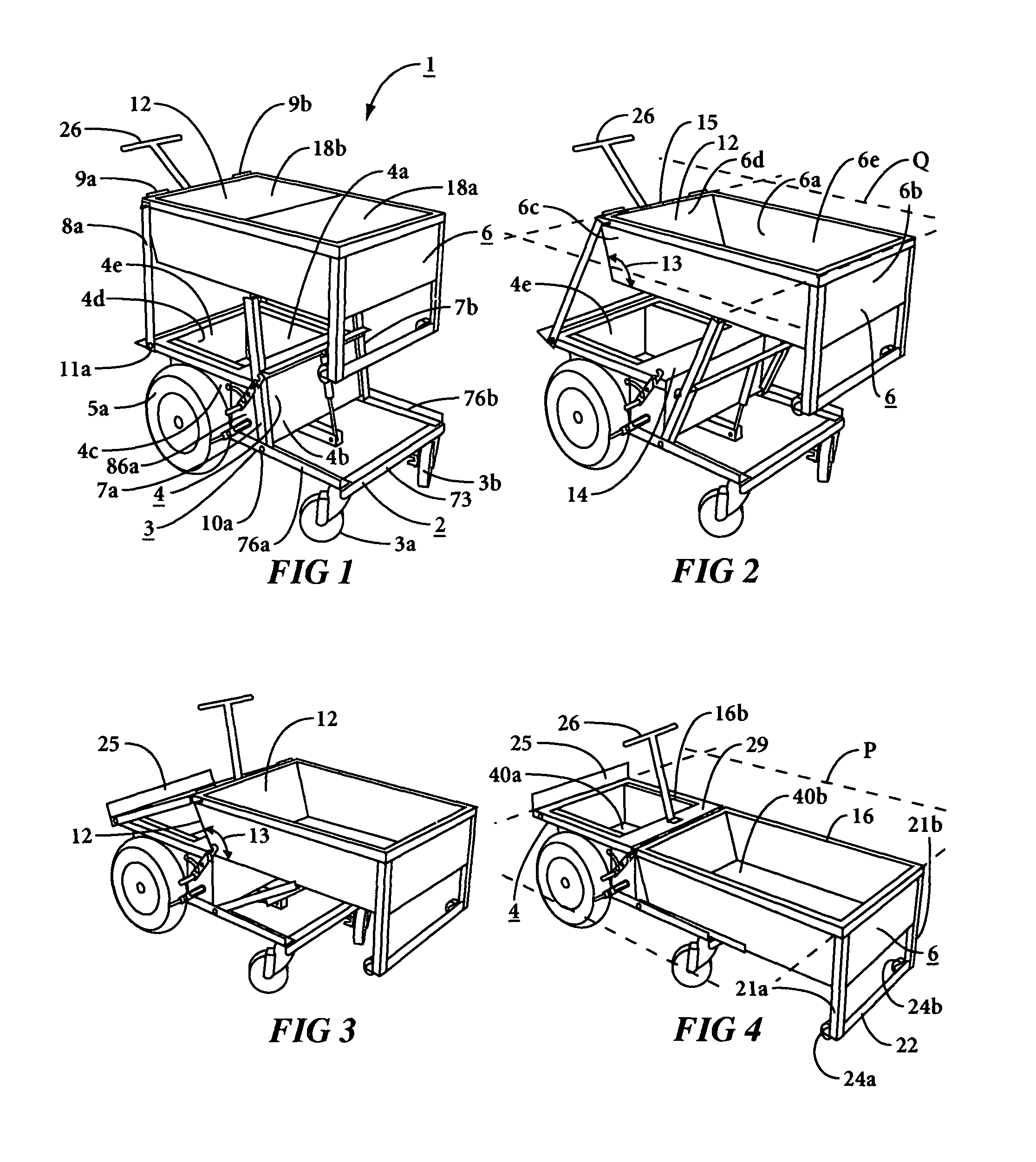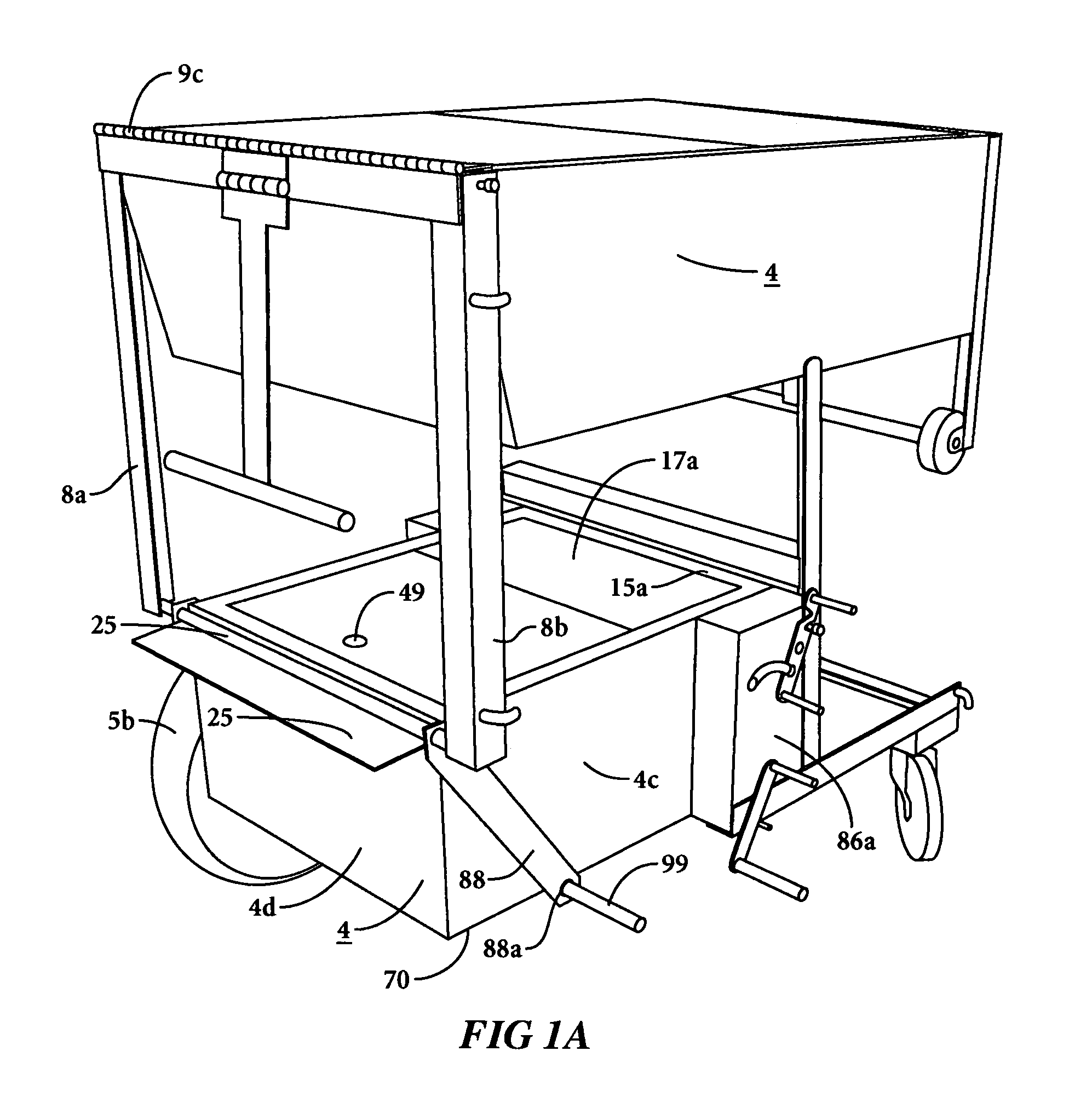Multipurpose work site utility carrier
a utility carrier and multi-purpose technology, applied in the field of work site utility carriers, can solve the problems of inability to provide the full functionalities of a hand truck, a retractable work bench and none provide the full functionalities of a hand truck, a safe place to store tools, and a dolly
- Summary
- Abstract
- Description
- Claims
- Application Information
AI Technical Summary
Benefits of technology
Problems solved by technology
Method used
Image
Examples
Embodiment Construction
[0050]An illustrative embodiment of utility carrier 1 is shown in FIGS. 1-4. Carrier 1 consists of a chassis 2 formed as an elongate frame of welded or bolted sections of angle irons 76a, 76b joined by transverse L-bracket 73. One or more castor wheels are mounted at one end of chassis 2, the 2-wheel set shown in FIG. 1 denoted 3a, 3b being preferred. Pneumatic tires 5a, 5b are mounted at the other end of chassis 2, both shown in FIG. 15.
[0051]A first structure 4 illustrated as a 4-sided receptacle is affixed to and extends from angle irons 76a, 76b. A second structure 6 illustrated as another 4-sided receptacle is pivotally mounted at one end on structure 4 and at its center portion on chassis 2. It is understood that either structure 4 or structure 6 may take some shape other than a 4-sided box. For purposes of describing the invention, the general term “structure” is used; and the structures 4 and 6 illustrated herein are 4-sided receptacles.
[0052]Structure 6 may be formed as a r...
PUM
 Login to View More
Login to View More Abstract
Description
Claims
Application Information
 Login to View More
Login to View More - R&D
- Intellectual Property
- Life Sciences
- Materials
- Tech Scout
- Unparalleled Data Quality
- Higher Quality Content
- 60% Fewer Hallucinations
Browse by: Latest US Patents, China's latest patents, Technical Efficacy Thesaurus, Application Domain, Technology Topic, Popular Technical Reports.
© 2025 PatSnap. All rights reserved.Legal|Privacy policy|Modern Slavery Act Transparency Statement|Sitemap|About US| Contact US: help@patsnap.com



